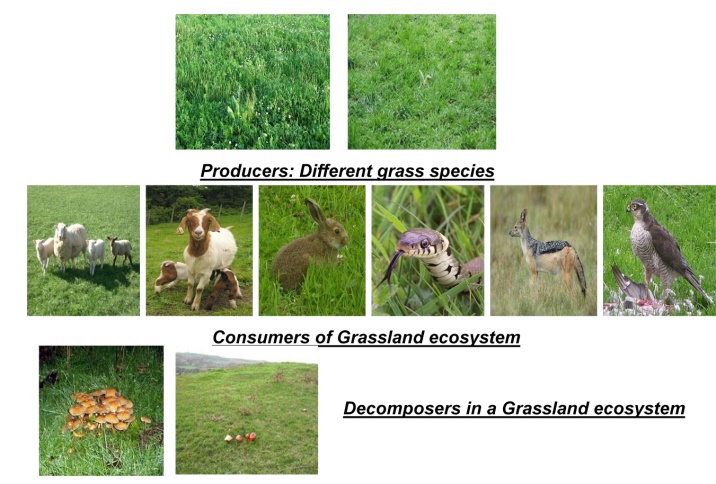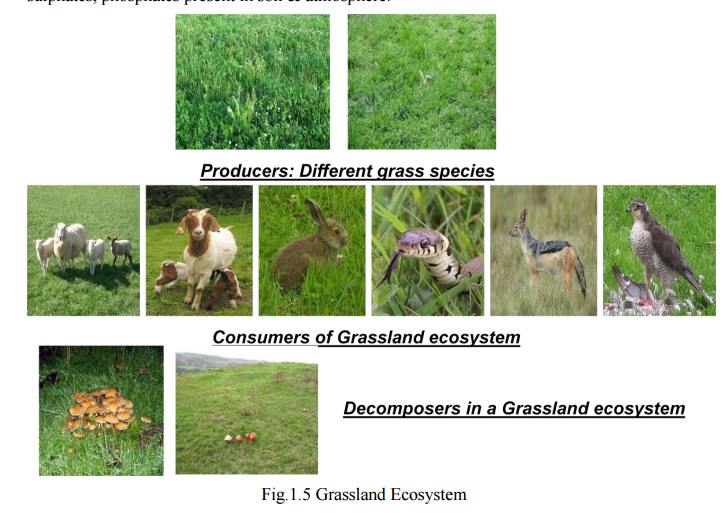Chapter: Environmental Science and Engineering
Structure and functions of Grassland Ecosystems

GRASSLAND ECOSYSTEM (TERRESTRIAL
ECOSYSTEM)
Introduction
v Grasslands
(also called Greenswards) are areas where the vegetation is dominated by
grasses and other herbaceous (non-woody) plants.
v Grasslands
occupy about 24% of the earth’s surface.
v Grasslands
occur in regions too dry for forests and too moist for deserts
v The
annual rainfall ranges between 25- 75
cm, Usually seasonal
v The
principal grasslands include:
Ø Prairies
(Canada, USA),Pampas (South America),Steppes (Europe & Asia) Veldts
(Africa)
v The
highest abundance & greatest diversity of large mammals are found in these
ecosystems.
v The
dominant animal species include
v Wild
horses, asses & antelope of Eurasia,
v Herds of
Bison of America; and
v The
antelope & other large herbivores of Africa.
Structure and functions of Grassland Ecosystems
I. Biotic components
1) Producer Organisms
v In
grassland, producers are mainly grasses; though, a few herbs & shrubs also
contribute to primary production of biomass.
v Some of
the most common species of grasses are:
v Brachiaria
sp., Cynodon sp., Desmodium sp., Digitaria sp.
2) Consumers
v In a
grassland, consumers are of three main types;
a) Primary Consumers
v The
primary consumers are herbivores feeding directly on grasses. These are grazing
animals such as
v Cows,
Buffaloes, Sheep, Goats, Deer, Rabbits etc.
v Besides
them, numerous species of insects, termites, etc are also present.
b) Secondary Consumers
v These are
carnivores that feed on primary consumers (Herbivores)
v These
include;-Frogs, Snakes, Lizards, Birds, Foxes, Jackals etc.
c) Tertiary Consumers
v These
include hawks etc. which feed on secondary consumers.
3) Decomposers
v These
include wide variety of saprotrophic micro- organism like: Bacteria; Fungi;
Actinomycetes
v They
attract the dead or decayed bodies of organisms & thus decomposition takes
place.
v Therefore,
nutrients are released for reuse by producers.
II. Abiotic components
v These
include basic inorganic & organic compounds present in the soil &
aerial environment.
v The essential elements like C, H, N, O, P, S etc. are supplied by water, nitrogen, nitrates, sulphates, phosphates present in soil & atmosphere.

Related Topics